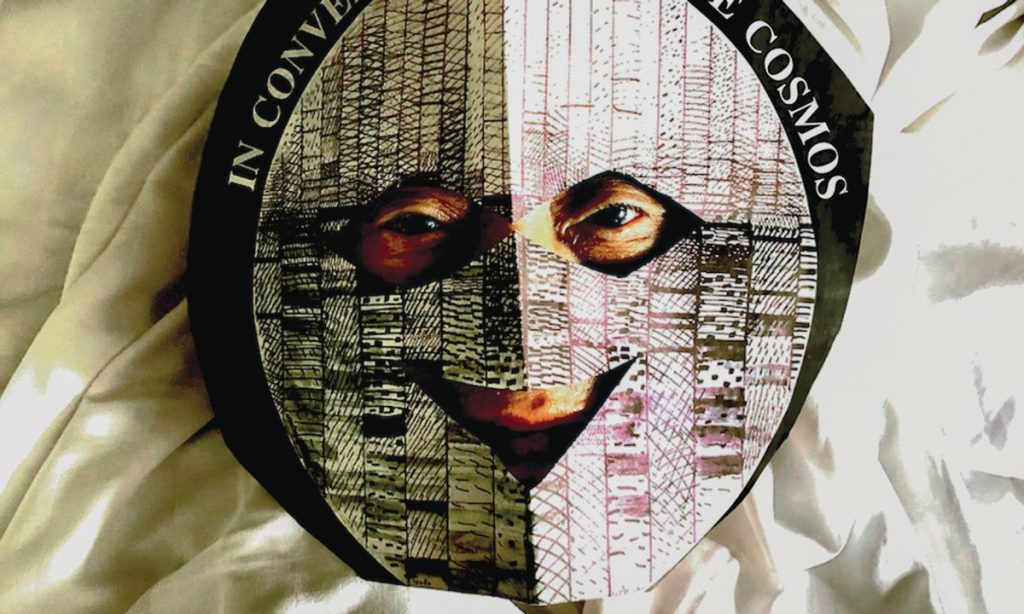David Medalla: In Conversation with the Cosmos
Museo Tamayo, until 30 March
The late Filipino artist David Medalla (1938-2020) was a polymath, a pioneer of kinetic, participatory and performance art, and a relentless collaborator as he bounced between London, Paris, New York and elsewhere. Ventures included the experimental Signals gallery in London (1964-66), Artists for Democracy in the 1970s (with Guy Brett, John Dugger and Cecilia Vicuña), the Mondrian Fan Club in 1994 (with Adam Nankervis) and the do-it-yourself London Biennale (in 1998). His own work ranged widely, as this survey demonstrates, spanning early drawings and paintings from the 1950s, playful and unwieldy soap-bubble sculptures of the 1960s, documentation of his masked and collaborative performances, to his late collages.
“My artworks have atomic beginnings. They begin small and simple and eventually they grow organically to monumental proportions,” Medalla told the magazine Mousse in 2011. “I foresee a time when people spontaneously—in streets, buildings, lifts, buses, trains, ships, airports, shops, supermarkets, thrift stores, squares and parks—will hum singly and together, and weave beautiful tapestries of sound.”
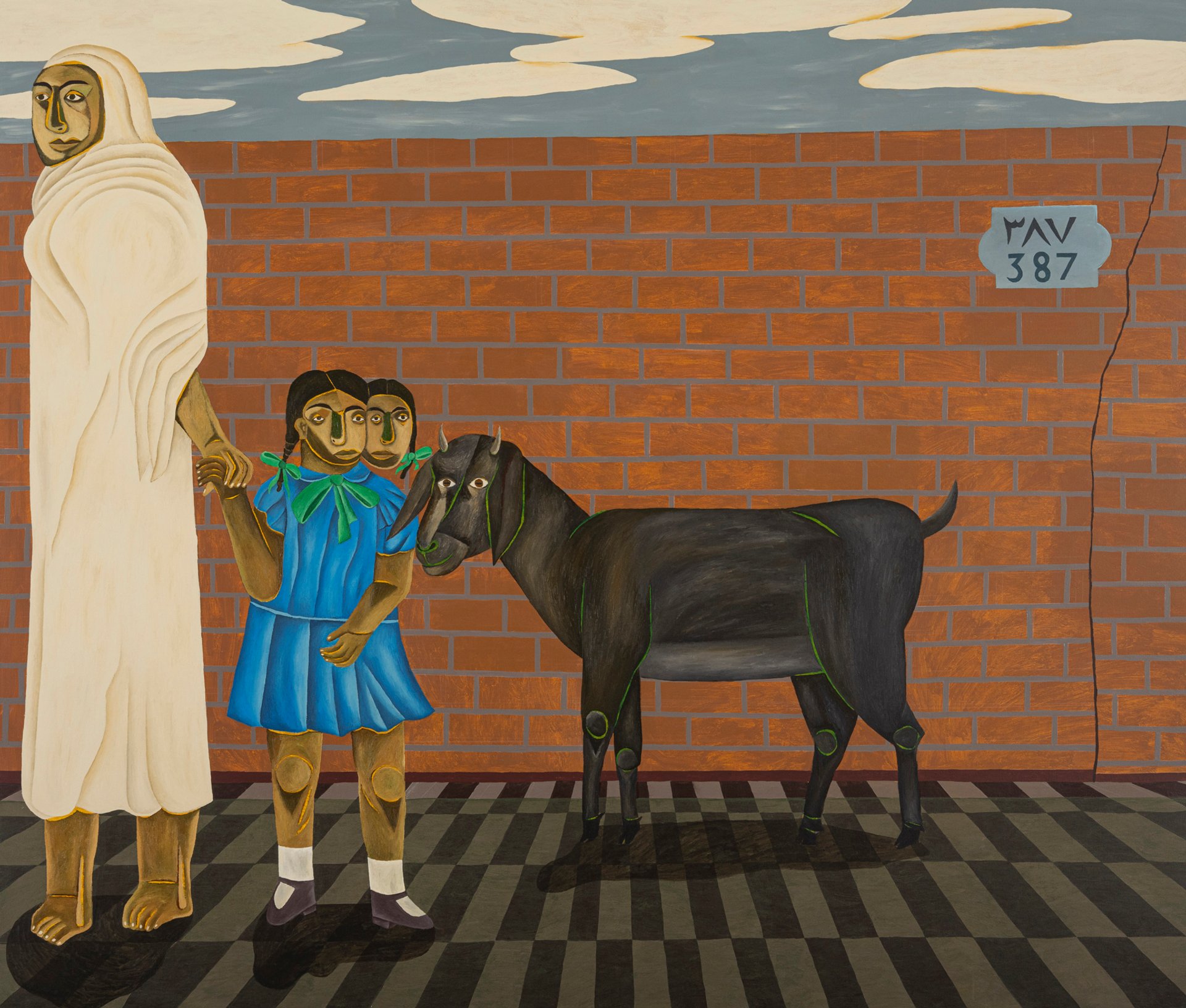
The Narrow Road (2024) by the Cairo-based Sudanese artist Salah Elmur Courtesy of the artist and Mariane Ibrahim
Salah Elmur: The Land of the Sun
Mariane Ibrahim, Until 3 May
The Khartoum-born, Cairo-based artist Salah Elmur pulls from rich photographic and painting traditions to create his distinctively bright, heavily patterned and elegantly stylised images. His work attests to the legacy of the Khartoum School, a movement that began in 1960 as the artists of the new nation of Sudan sought to develop a distinctive national aesthetic. Elmur also draws on his family’s old photography studio as the basis for many of his compositions. But in place of formal poses and framing, he introduces improbable animals and plants, distorted forms and surreal touches.
“Sudan, with its rich diversity, culturally and ethnically, is the main form of inspiration,” Elmur told The Guardian in 2023 on the occasion of a two-part solo show at Gallery 1957 and Vigo Gallery. “I go out of the country for a few months but I have to come back to Khartoum every now and then just to recharge myself and to fill my imagination and my vision.”
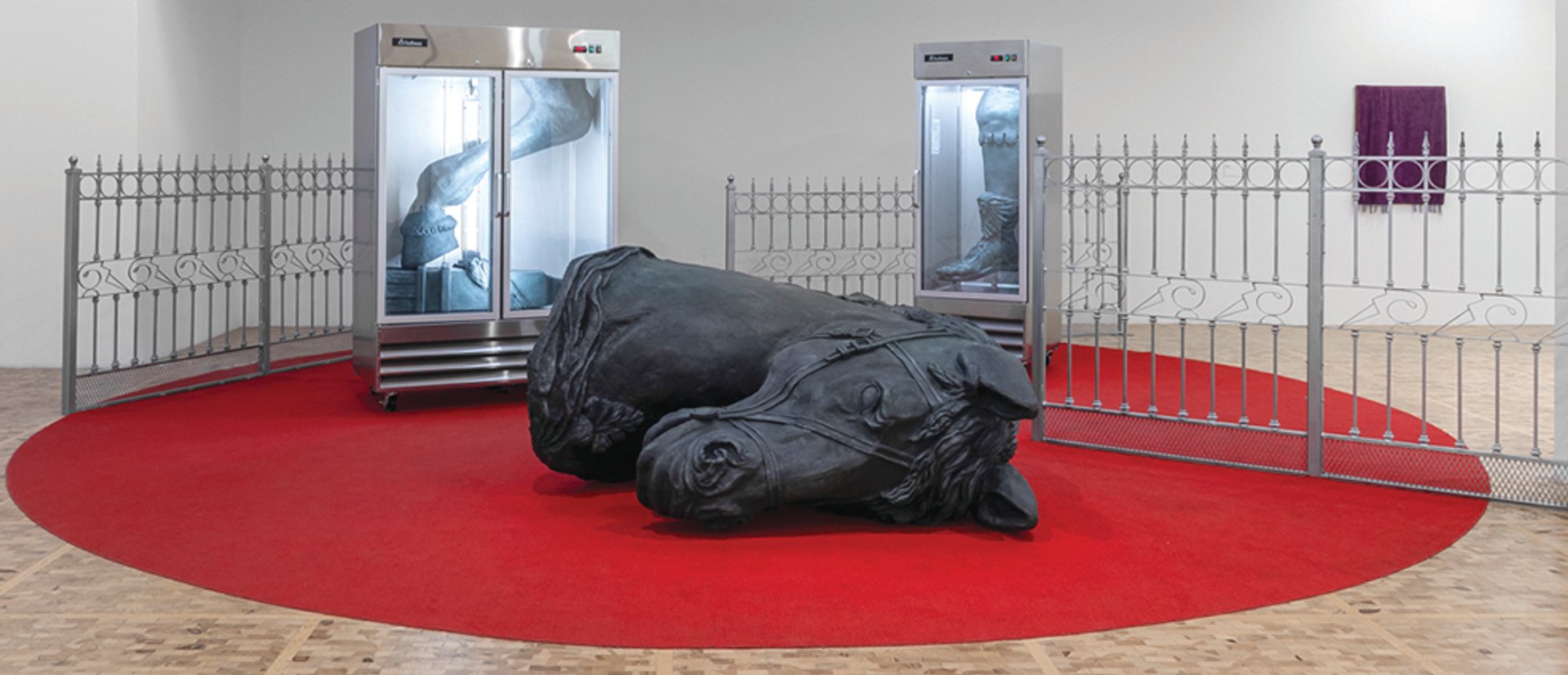
Andrea Ferrero’s All the King’s Horses (2024) was commissioned for OTR*S MUND*S © Gerardo Landa; Courtesy of Museo Tamayo
OTR*S MUND*S
Museo Tamayo, Until 23 February
Though not strictly speaking a recurring, quadrennial survey of Mexico City-based artists, this is the second show Museo Tamayo has organised spotlighting the city’s artistic vanguard, following on from OTRXS MUNDXS in 2020. This time around 24 artists, duos and collectives who work in the city have been selected by the curator Aram Moshayedi (with the assistant curator Lena Solà Nogué). Among them are the singer, film-maker and visual artist Luisa Almaguer; the Argentine neo-Surrealist painter Carolina Fusilier; Andy Medina, who uses pre-Columbian iconography to address contemporary subjects; and Calixto Ramírez, whose solitary and enigmatic performances endure as videos and photographs. The installation and programming are intended to mirror the unwieldy and sprawling psycho-geography of Mexico City itself, with a range of installations throughout the museum.
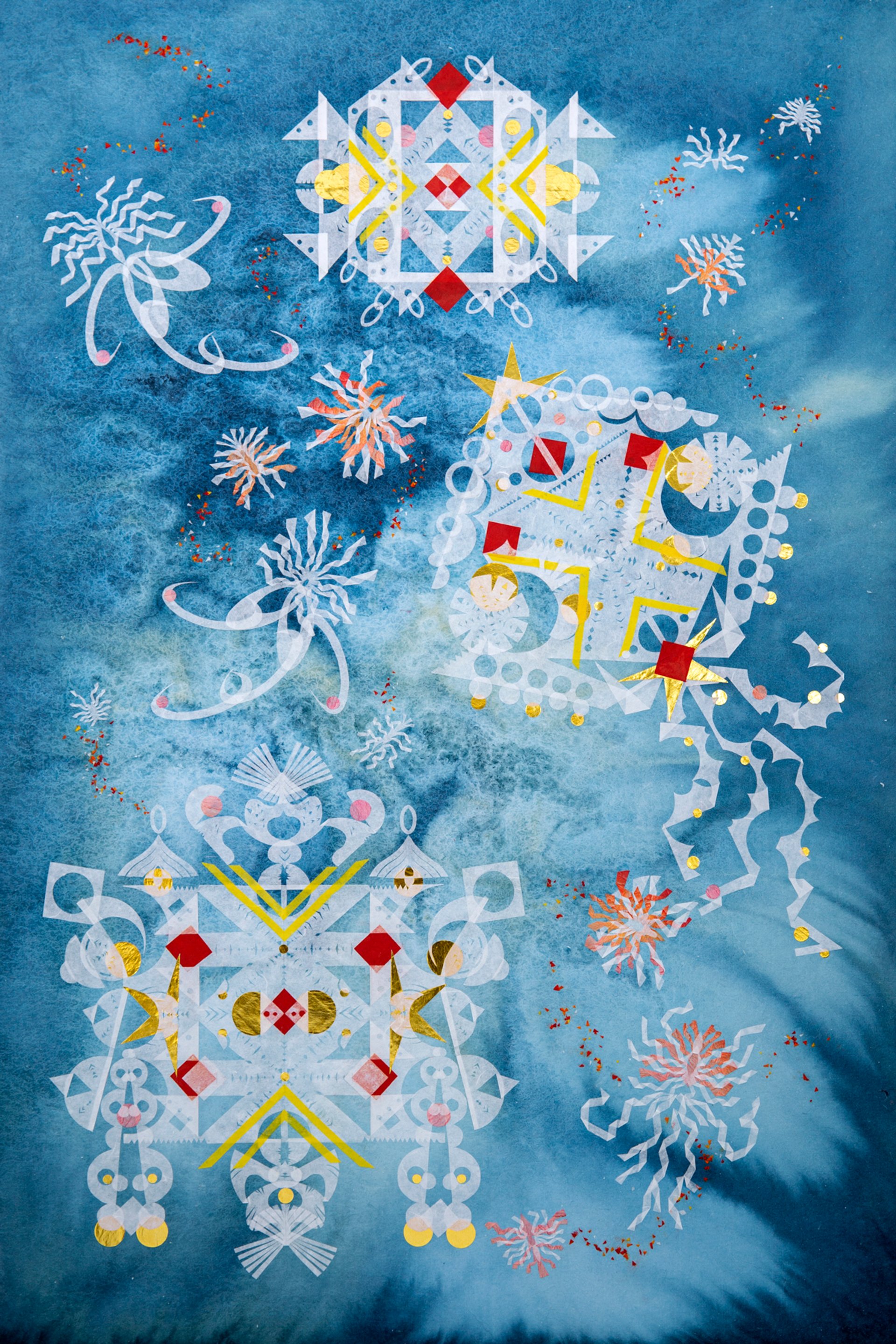
Haegue Yang’s Moonless Soul Site—Mesmerizing Mesh #266 (2024); the artist’s show at Kurimanzutto draws on Japanese, Korean and Slavic paper-based craft traditions Courtesy of Kurimanzutto
Haegue Yang: Arcane Abstractions
Kurimanzutto, 8 February-5 April
The Korean artist’s second solo show in Mexico City synthesises her latest research into a range of paper-based craft traditions and collaborations with Mexican artisans. The resulting works, and a related archival display, bring together elements of ritualistic straw rope traditions from Japan, Korea’s geumjul tradition of handmade decorative garlands plus the Slavic didukh, a pagan decoration and offering intended to ensure a plentiful harvest in the coming year. The resulting works translate elements of these disparate traditions into Yang’s distinctive abstract language. An accompanying publication, Mesmerizing Mesh—Power Paper, chronicles the artist’s ongoing research.
“I am very conscious of that fact of me being a stranger in most of these exhibiting places,” Yang told Elephant magazine in 2022. “Maybe it comes from being Korean, being from a small country that has suffered so much by frequent foreign invasions, as well as ignorance.” She added: “I always wondered: ‘What is this act of airlifting? Of, boom, appearing and then disappearing?’ That question became seriously relevant to me. I want to be influenced, instead of just superimposing my ideas and then going away.”
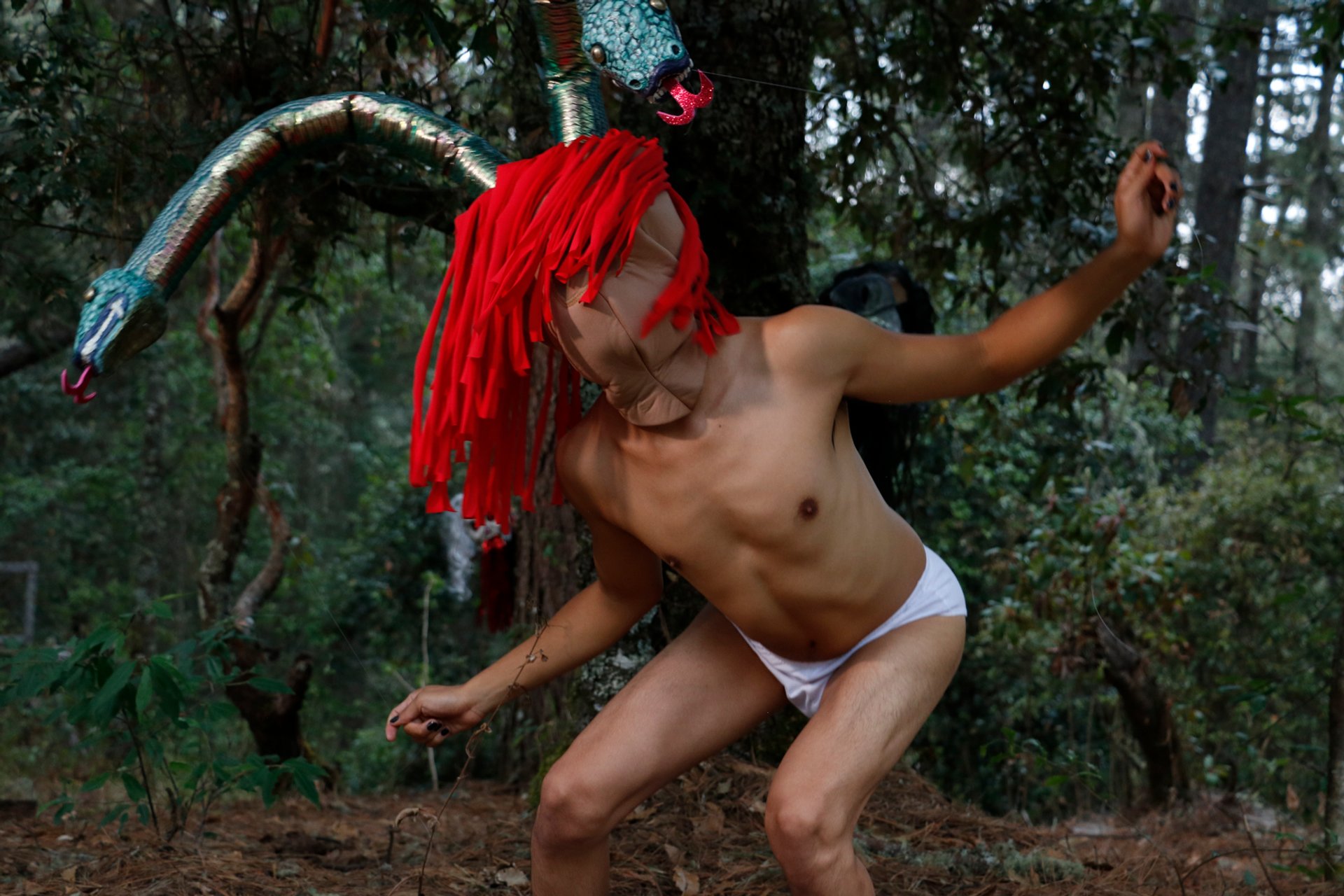
Naomi Rincón Gallardo: Bristling their contours into razors
Peana, Until 29 March
An avid researcher of both Mesoamerican mythology and colonial history, Naomi Rincón Gallardo’s performances and videos often reinterpret ancient narratives and symbols through a bold aesthetic she has described as “queer/feminist political handmade Surrealism”. Here, the North Carolina-born, Mexico City-based artist is presenting her Tzitzimime Trilogy (2021-23) of videos, including the Mexican premiere of its final chapter, Eclipse (2023). The video draws on ancient Nahua beliefs about eclipses, as recorded in codices from the 16th century, which involve assorted mutilated bodies, otherworldly butterflies and tzitzimimes, who descend under cover of darkness to devour men.
“The plots of these counter-worlds are fuelled by indignation in tension with hope and desire,” Rincón Gallardo said of the worlds she builds in her videos, in a 2023 interview with Clot Magazine. “In spite of the necropolitical forces of terror that are rapidly spreading over territories that have been colonised—such as the Mexican territory, where I’m based—my counter-worlds insist on claiming livable and pleasurable worlds. The demand is not just to survive but to play loud!”
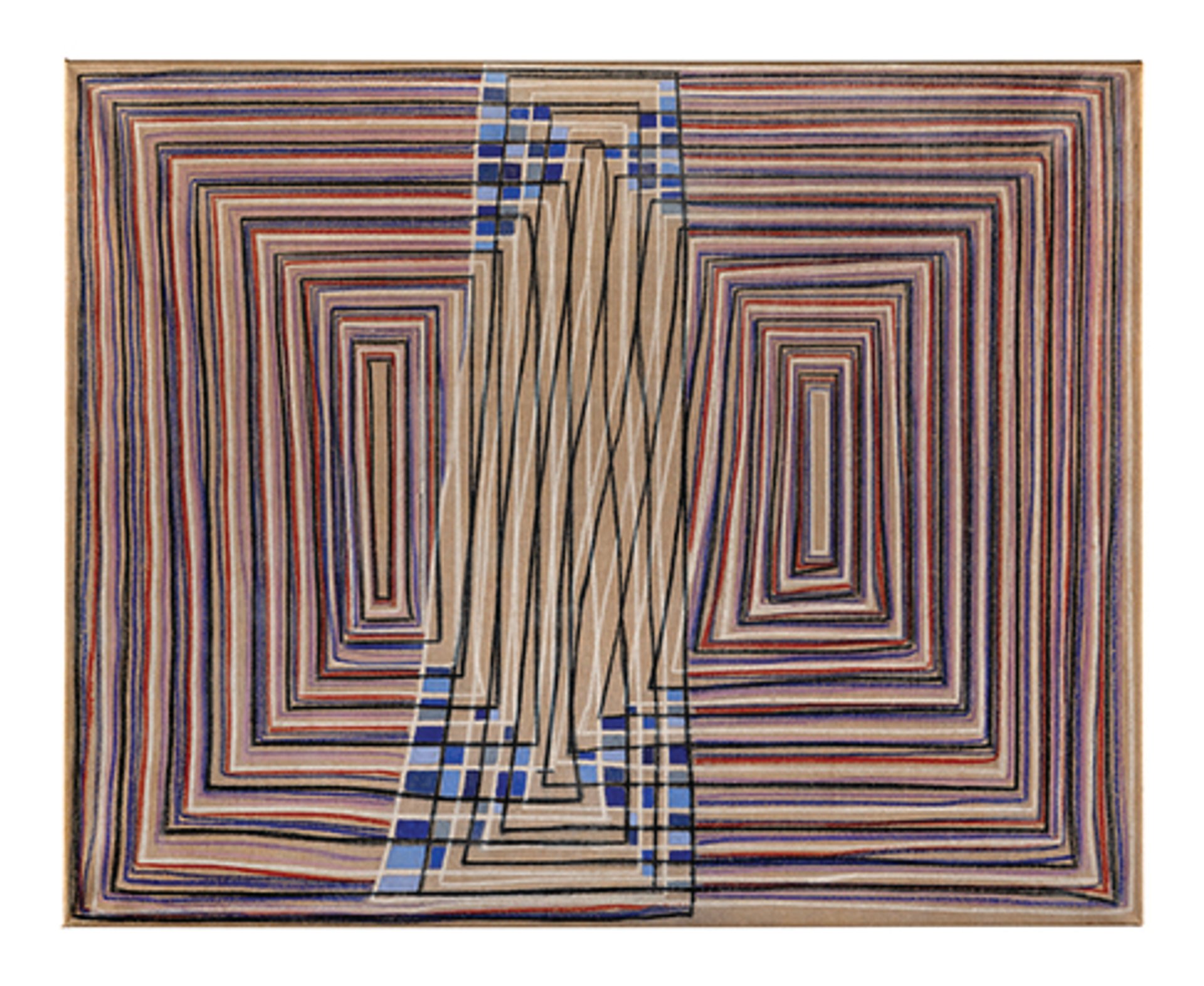
Myra Landau’s abstract Ritmo carioca 9 (1973), created by applying pastels onto linen Photo: Cristina Reyes: Courtesy of MUAC
Myra Landau: Sensitive Geometry
Museo Universitario Arte Contemporáneo, Until 23 February
In 1978, the Brazilian art critic Roberto Pontual coined the term “sensitive geometry” to define a type of abstract art rooted in materiality and textile traditions, and distinct from the hard-edged abstraction dominating much of the international art world. Foremost among its practitioners in Latin America, though criminally underknown today, was Myra Landau (1926-2018), a Romanian artist who fled Nazi persecution as a teen. Her family settled in Rio de Janeiro and then, in the 1960s, she moved to Mexico. She became known for her work as a printmaker and for applying pastels directly onto linen canvases, creating intricate, colourful abstract compositions that seem to meld elements of weaving with radiating geometric forms. This important retrospective, curated by Pilar García brings together paintings, drawings, artist’s books and textiles.



